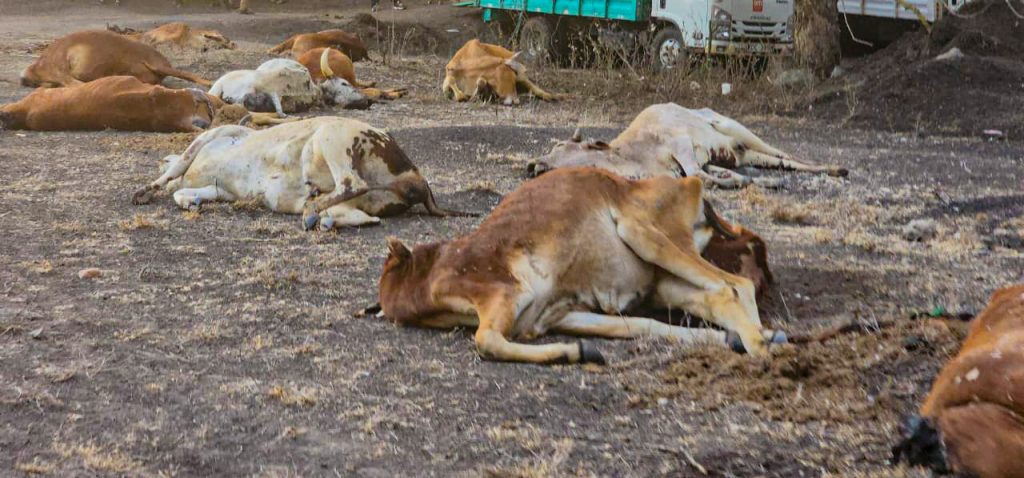The convergence of blue and green economy in mitigating drought
Watching the features of the starving populace in Northern Kenya, you can’t help but appreciate the crucial little things in life that are often taken for granted.
If one can afford at least a meal a day, freshwater or just a salty one for that matter, and a place to sleep without the anxiety of the ominous danger of marauding hungry wild animals and the vagaries of harsh weather, then gratitude is way much in order.
These are precious things in life that more than 4 million people are desperate for and longing to have right now in this part of the country.
Assessing the situation, you would appreciate the gaping disparities in life regarding how so many people wallow in abject poverty. While on the other hand, billions of shillings are in the hands of a few bourgeoisie – as the current vetting of cabinet secretaries revealed.
Sustainment of livelihood in the region is a tall order, a situation that has seen children in different families and livestock dying. The carcasses of wild and domestic animals are left strewn on the ground, reshuffling the topographic outlook of that landmass.
DEFINITION OF TERMS: The United Nations Environment Programme (UNEP) defines the green economy as one ‘that results in improved human well-being and social equity, while significantly reducing environmental risks and ecological scarcities’. Green economy strategies tend to focus on the sectors of energy, transport, sometimes agriculture and forestry, while the blue economy focuses on fisheries sectors and marine and coastal resources. Both incorporate strategies to address climate mitigation and adaptation.
The surviving pupils find it impracticable to stay in class due to churning pain in the stomach, characterized by days without food. In such a state, they cannot endure the regular class sessions with their teachers, who also suffer the same fate.
A drought of this magnitude reportedly occurred forty years ago in 1982, with sporadic ones of lesser severity at least annually that have ever hampered proper agricultural practices for food security from which appropriate lessons should have been drawn.
Had the subsequent governments learned from the irregular weather patterns, they could have implemented comprehensive measures to mitigate the acute food insecurity. The new government has its work cut out in the interest of the poor.
Sadly, the country’s political class is not doing much to solve the problem; if the status quo remains, they’ll nurture a brood of desperate voting machines that would be ready for handouts in exchange for votes.
The measures could only be realized if the country moved from overreliance on rain-fed agriculture to irrigation farming to ensure that both the blue and green economies were simultaneously exploited.
What, then, are the blue economy and green economy? And what is the convergent point between the two so that a working agricultural sector is realized without necessarily relying on rainfall?
Apart from the natural precipitation dropping from the skies, Kenya is beaming with a well-watered land courtesy of major rivers and fresh and salty lakes that dot its terrain. (Sadly, some of these water bodies are drying up due to the vagaries of climatic change, like Lake Kamnarok of Rift Valley, which once hosted 20,000 crocodiles).
Additionally, our coastal maritime zone is well defined, Somalia’s claim on it notwithstanding, into the Indian Ocean to a measure not worth demeaning – about 62,000 square miles. So, the resources sourced from these natural entities entail the blue economy.
However, on a more sustainable approach, the blue economy may be utilized in a well-planned strategy to facilitate the expansion of the green economy through concerted integrated irrigation. The current drought situation ravaging nearly half of the country would have been mitigated were proper planning and utilization of readily available water resources in the lakes, rivers, and oceans harnessed to sustain a green economy.
Therefore, a green economy entails resources mainly sourced from plants due to natural precipitation for their bloom or determined irrigation within the terrestrial orb. These plant materials may be used for their edibility or to drive essential industries such as paper or textiles.
Ecologically, plants are carbon sinks – an act that purifies the atmosphere free from greenhouse gases. The explained facts help to beget clean GDP, an economy whose biodiversity is intact and human health is robust.
Very important!
At the beginning of this year, the Forest Service repository revealed that the country is only 3.6 percent shy of attaining the constitutionally required 10% forest cover of the landmass. If this race is won, there is an assurance of the precipitation.
The consequence is that the indispensable precipitation would replenish the blue segment of the economy, a phenomenon that is just a direct and of easily conceivable benefit.
From a broader perspective, precipitation has a major influence on geothermal energy, which is one of the green energy sources (38 percent of the country’s total power supply comes from geothermal).
As it rains, it percolates to the earth’s core, where it is subjected to intense heating. Combined with extreme pressure, the water in the form of steam is forced through fissures to the earth’s surface again, and we harness it as geothermal energy to power our economy.
The convergence of blue and green economies is attained not only when the blue revitalizes the green but, importantly, when their vast resources are sustainably exploited for our motherland’s higher purpose and good.
If Kenya and Africa take this route, severe droughts and acute food insecurity will no longer form feature stories on blogs, newspapers, or TV documentaries.
